Fully open source JBC T245-compatible soldering station and tool holder, forked from howie-j's opensolder

When looking to buy a genuine JBC station to replace my dated ERSA icon Pico I've came across howie-j's opensolder. That was already pretty close to my requirements, so i forked this repo.
- T12 clone form factor that does not take up valuable bench space
- Optional USB connection to PID tune and compensate offsets
- Add a tag-connect debug connector
- Add a I2C to the breakout to be able to extend functionality afterwards (ie. desolder station)
- JBC T245 tip compatibility, with similar performance to the original station
- QoL features that the CDB station have, like auto standby, tip remover, holder, tip cleaner etc.
- Simple design using cheap off-the-shelf parts
- A compact handpiece stand with these features:
- Detection when the handpiece is in the tool holder (auto standby)
- Detection when you're about to swap tips (cut power)
- Integrated tip remover, tip storage, tip cleaner and a soldering wire spool holder
- Simple to build
- 24V toroidal transformer
- Zero Crossing AC switching
- OLED display and rotary encoder for adjusting temperature
- Compact and low profile design
- Super fast heatup time (~4s)
- Hardware should be mostly 3D printable, and easy to build using regular tools
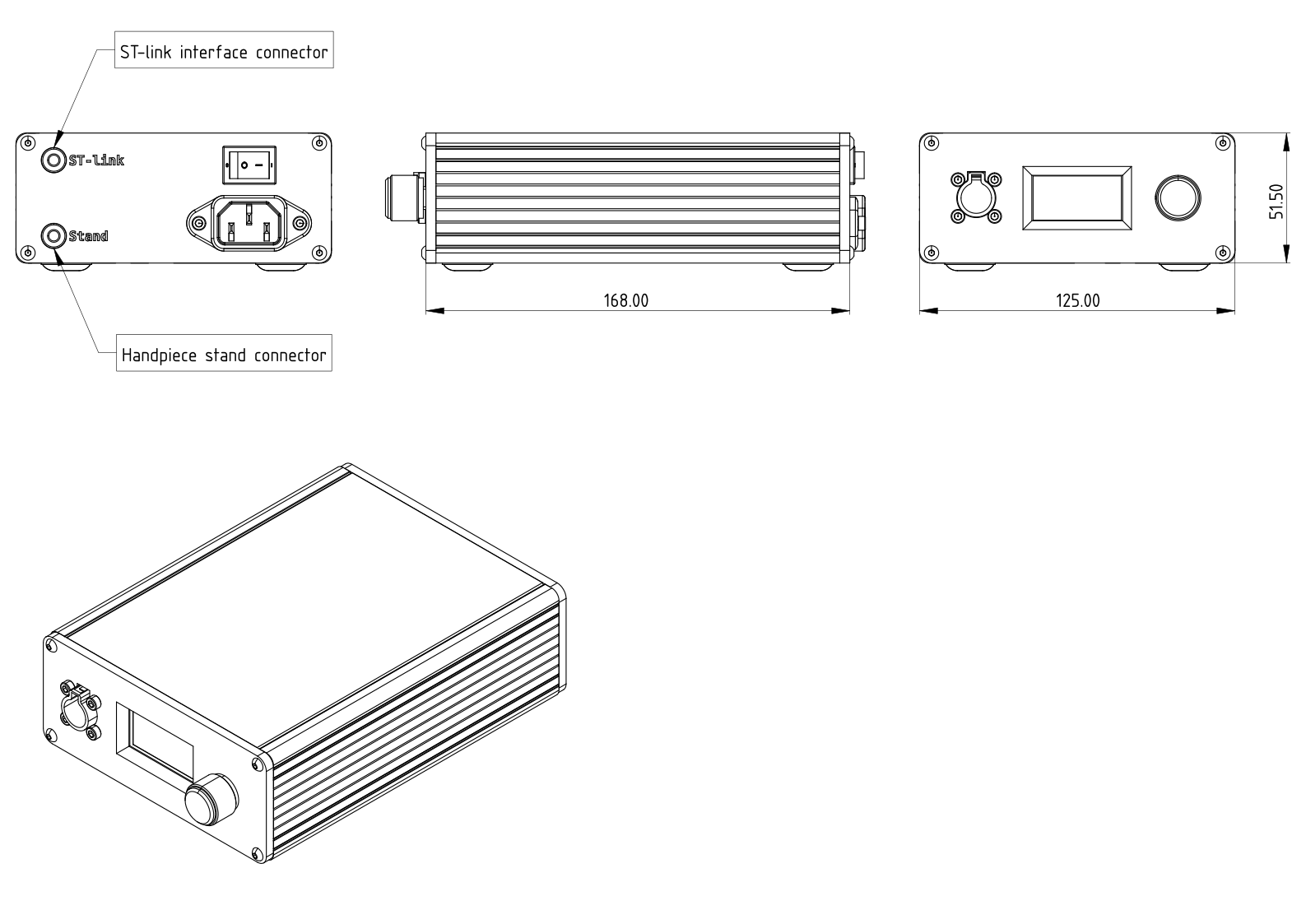
The station is built in a Hammond enclosure, with a center mounted transformer. The PCB is mounted to the custom front panel, and all 230VAC connections is in the rear of the chassis.
There is two connectors on the rear panel, one for connecting to the stand, and an optional ST-link connector for firmware upgrades.
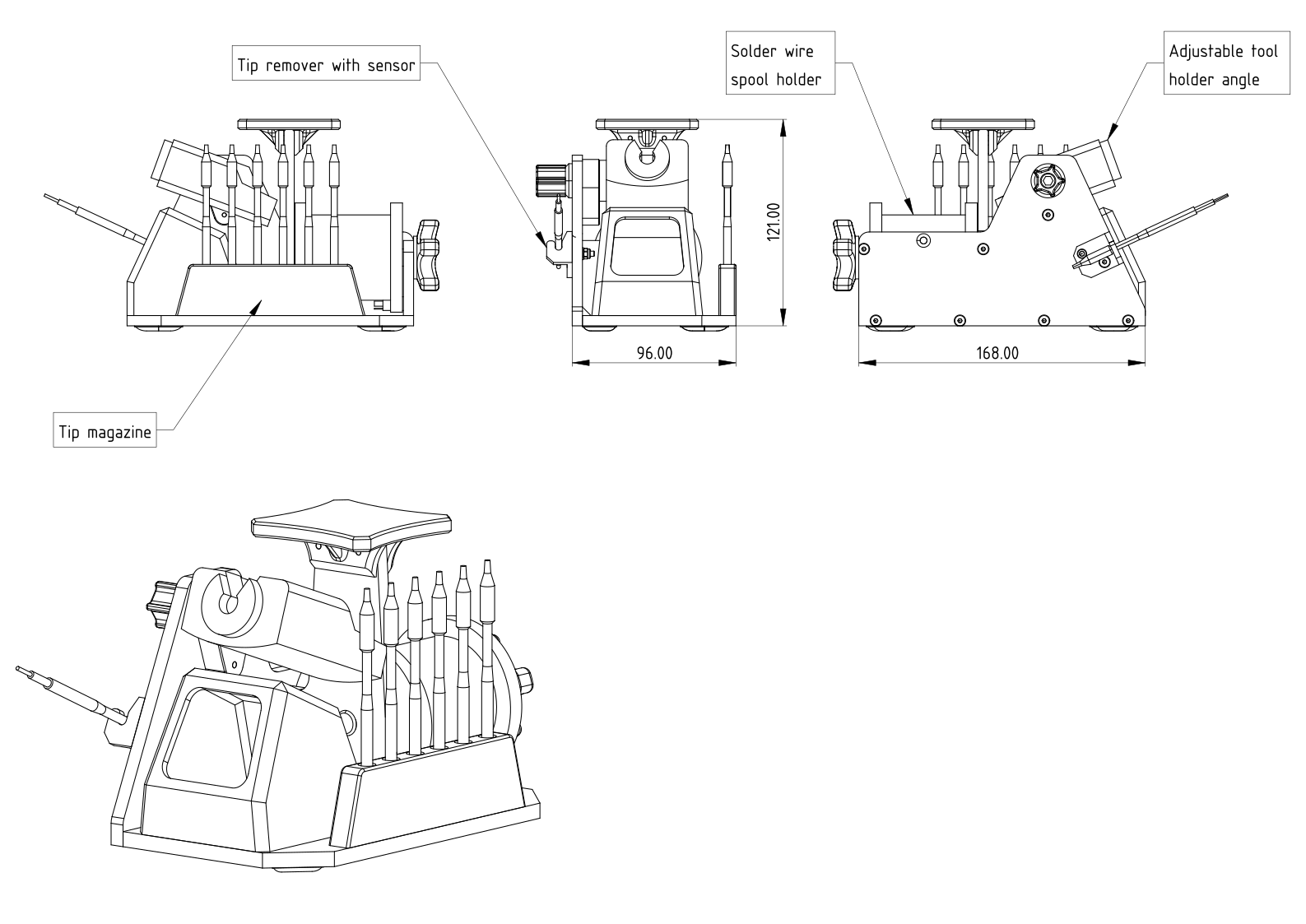
The stand is made of 3D-printed parts, a genuine JBC tool holder, a tip remover made from aluminium angle and some fasteners. Most parts can be made from aluminium sheet if that is preferred.
This is the internal connections of the JBC C245 cartridge:
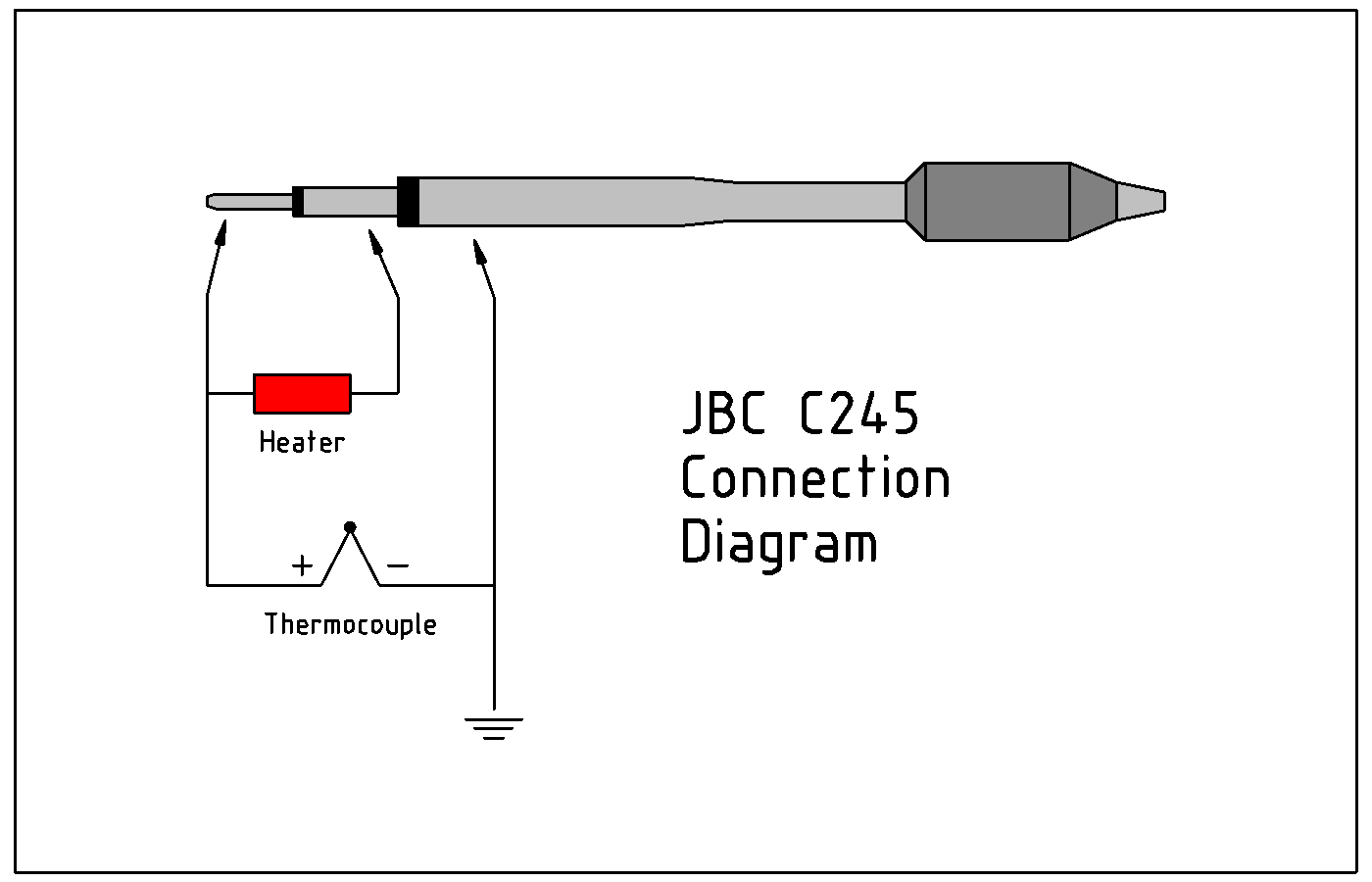
The schematic is divided into three sheets: AC, Analog and MCU.
The 24VAC input is fused, then connected directly to the tip center pin (5). Switching is done with two N-channel mosfets, driven by a Si8751 isolated gate driver.
Zero cross detection is done with an AC optocoupler, and the current is limited by three 10k resistors (to reduce BOM items). This solution triggers the ZeroCross about 90uS prematurely, and that is compensated for in firmware.
The MCU and thermocouple frontend must be electrically isolated, and a 24V to 5V DCDC PSU module solves that problem. The DCDC-supply is preregulated with a 24V linear regulator, and post-regulated to 3.3V with a LDO. This power supply chain is in need of some simplification, but the components are few and cheap, and it works great for now.
The thermocouple signal is amplified with a MAX4238 chopper opamp, with a fairly arbitrary amplification of 221, since temperature calibration is done in firmware anyway. No negative supply rail means the thermocouple can't sense lower temperatures than room temp, but that's not needed for a soldering station.
Long handpiece wires means lots of crosstalk, so a pair of diodes clamps the thermocouple input at Vf. The MCU pin TIP_CLAMP is driven low when power is applied to the handpiece, to clamp noise on the opamp input. When its time to measure tip temperature, the pin is set to input, and a delay waits for the RC filter to stabilize.
To sense if there is a tip cartridge in the handpiece, TIP_CHECK is driven high. The low impedance of the thermocouple + heater (a few Ω's) will create a very low voltage drop. If the tip is removed, the Vf of the input protection diode will drive THERMOCOUPLE_ADC close to 3.3V.
A STM32F072 is used since I have a few of them in stock, but almost any STM32 could be adapted to work. To sense PCB temperature (and for cold junction compensation), an I2C temp sensor is added. The MCU might have an internal temperature sensor, but have not looked into that yet.
The rotary encoder and handpiece stand inputs are filtered using plain RC filters. This, combined with the input hysteresis, removes most input noise. The TIM encoder inputs also have additional filtering and FSM redundancy.
Check out this interactive BOM
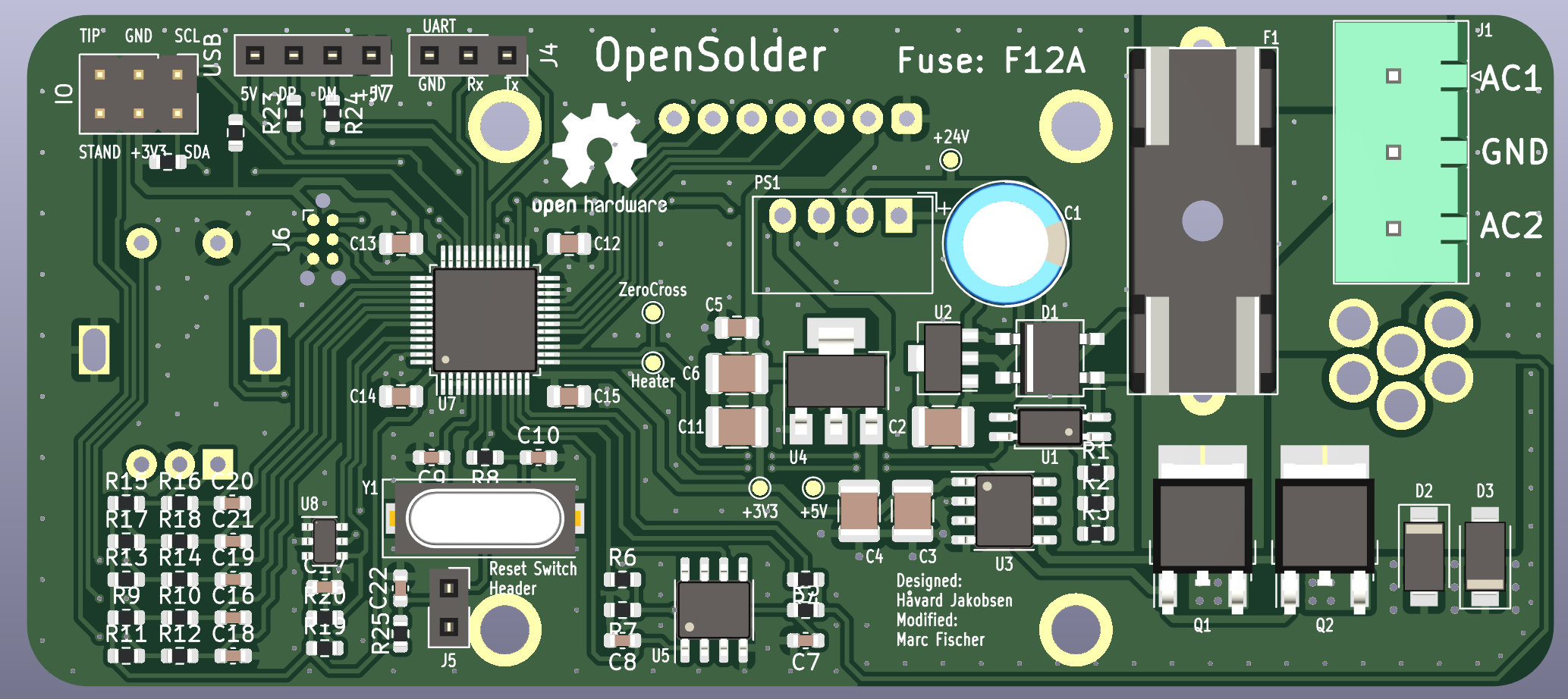
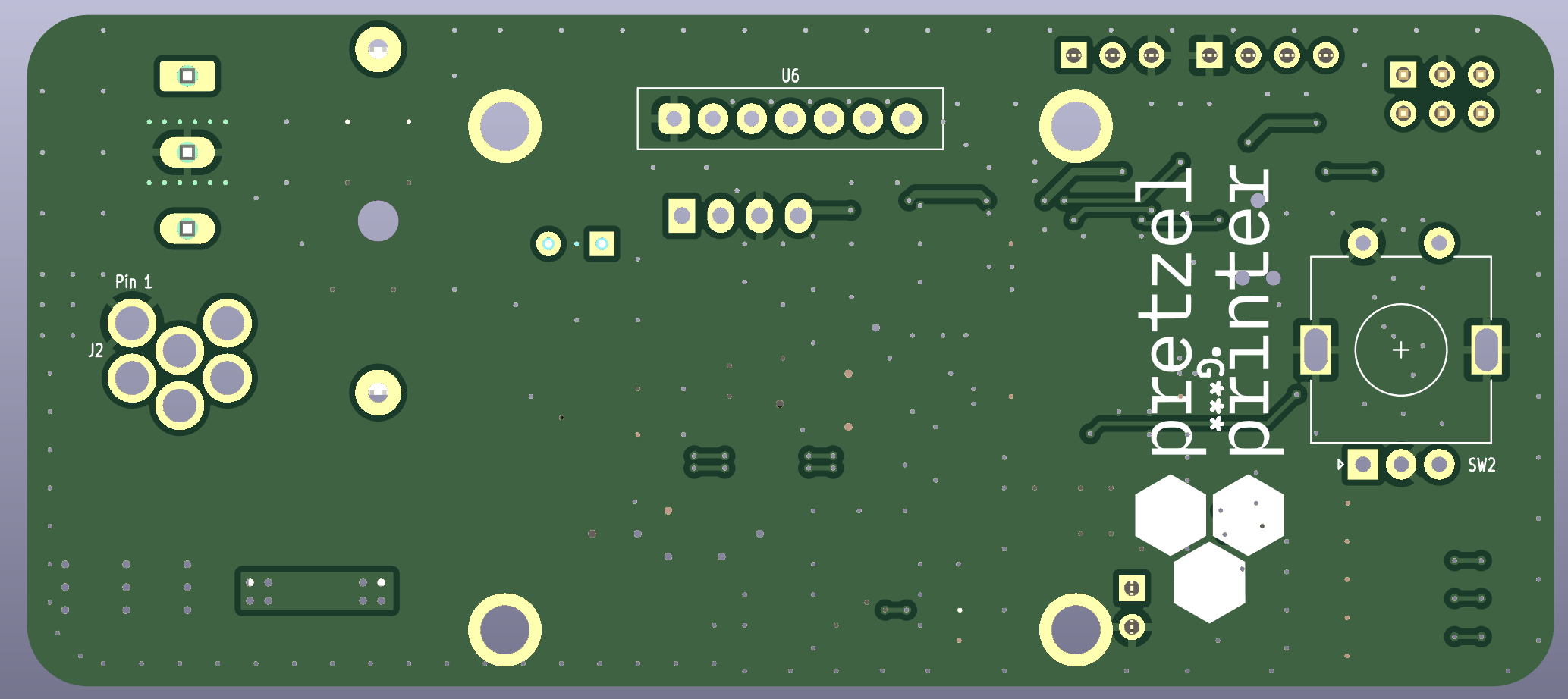
The PCB is quite low density, uses 0603 SMD components and is fully hand solderable with a microscope. Connections to the rear connectors (stand and I2C-2 breakout) is done via a 6-pin IDC connector, so no crimping of tiny connector pins are necessary. The PCB is mounted to the front panel via the rotary encoder and the handpiece connector.
The firmware is simple and functional, and uses a modified hysteresis temperature controller that is very fast but has some initial overshoot. Currently all default values are set in opensolder.h, and are reset when the station is powered off.
Nothing is currently missing for regular functionality. However some features would be cool to have:
- More accurate temp control (PID or other controller)
- User changeable default values
- Menu for changing default values
- Better looking UI
The unisolder project Marco Reps foldvarid93's JBC Soldering Station johnmx's eevblog thread howie-j's opensolder